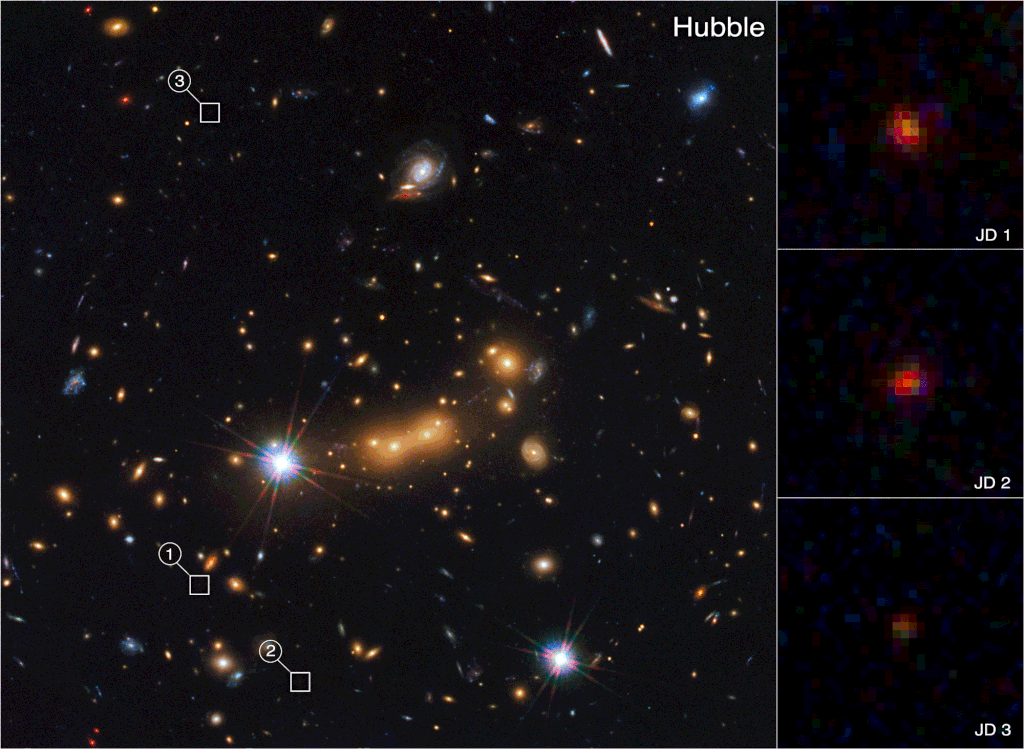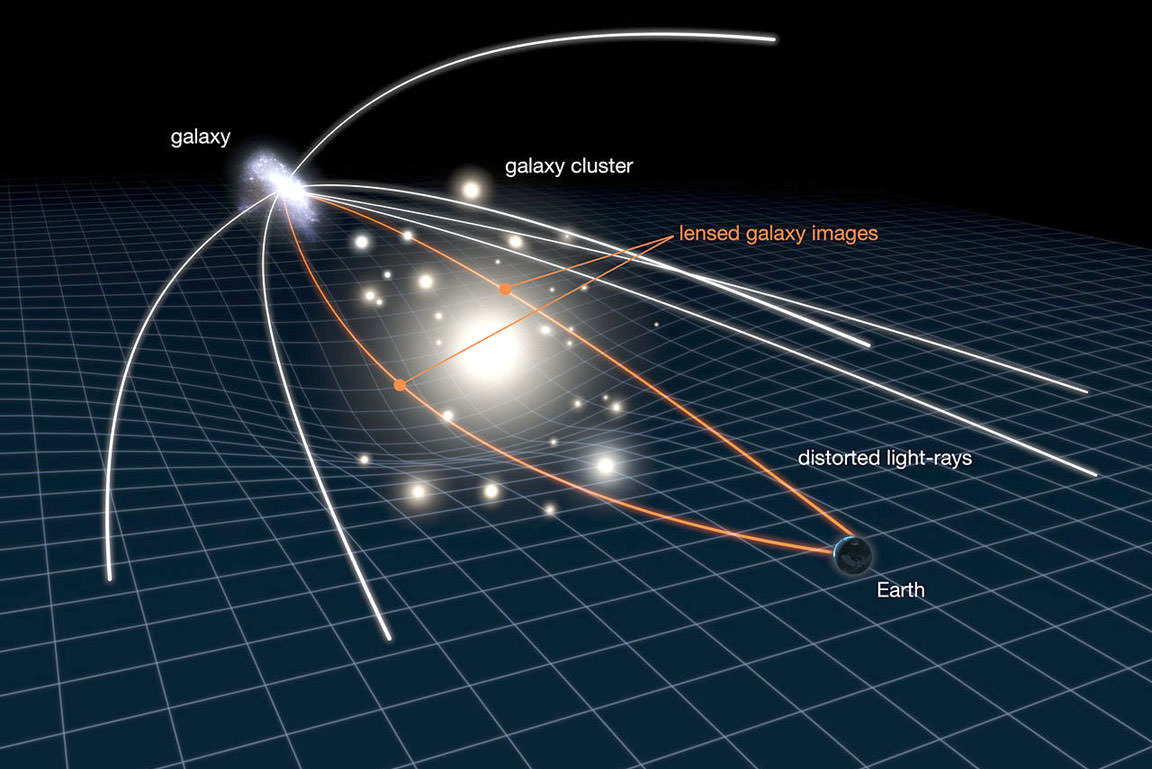One of the great tragedies of the night sky is that we will never travel to much of what we see. We may eventually travel to nearby stars, and even distant reaches of our galaxy, but the limits of light speed and cosmic expansion make it impossible for us to travel beyond our local group. So we can only observe distant galaxies, and we can only observe them from our home in the universe. You might think that means we can only see one face of those galaxies, but thanks to the James Webb Space Telescope that isn’t entirely true.
As light from distant galaxies traverses the cosmos to reach us, its path can be deflected gravitationally along the way, known as gravitational lensing. For very distant galaxies their light is often lensed through galactic clusters closer to us and can produce multiple images. Each of these images comes from a different path of light.

You can see this in a recent set of images released by the Space Telescope Science Institute. It shows a comparison of the galactic cluster MACS0647 captured by Hubble in 2012 and as seen by Webb in 2022. In the faint background of this cluster are three images of a more distant galaxy known as MACS0647-JD. It’s the same galaxy, but gravitational lensing lets us see it from slightly different paths. In the Hubble image, the galaxy images are just blurry clusters of pixels, but Webb can resolve these galaxies in some detail. Each image seems to have two smudges of light, and that means JD could be an early colliding galaxy. If it is the merger of two galaxies, it will be the most distant galactic merger we’ve observed.
One of the side effects of gravitational lensing is that it can magnify light from these far galaxies. This means the galaxy appears closer and brighter than it actually is. In the case of MACS0647-JD, the three images are magnified by different amounts. The images known as JD1, JD2, and JD3 are magnified by factors of 8, 5, and 2. Additionally, since the light path of each image is different, we also see the galaxy from three slightly different times.
This image is a great example of the power of JWST. It not only allows us to study the earliest galaxies in detail, but it also allows us to see some galaxies from more than one point of view.
Reference: Tiger Yu-Yang Hsiao, et al. “JWST reveals a possible z?11 galaxy merger in triply-lensed MACS0647?JD.” arXiv preprint arXiv:2210.14123 (2022).

